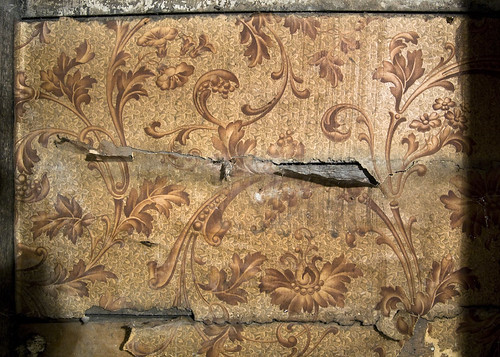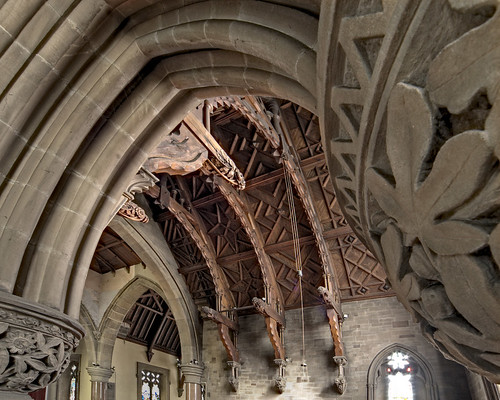Cellar Discovery - *****UPDATE*****
From Gill Saunders at the V&A (many thanks)
The wallpaper is a 'sanitary' wallpaper, so-called because it was designed to be washable (printed with oil-based pigments rather than the water-soluble tempera pigments previously used in wallpaper manufacture, and often varnished after it was hung to further water-proof the surface). Typically, sanitary papers are printed in tones of brown or dark green. They were usually chosen for those areas of the house which were most likely to get dirty quickly or repeatedly - such as halls, stairwells, kitchens and sculleries.
From the colouring and the pattern I think your wallpaper probably dates from the 1880s or 1890s, but I am afraid there is nothing distinctive about this paper which would enable me to identify the designer or the manufacturer. There were hundreds of wallpaper manafuacturers working in the later 19th century, each issuing thousands of new patterns every year, most designed anonymously
For a mindcrunchingly detailed look at the wallpaper click here
Whilst looking for something down in my cellar, I managed to fall over a few boxes and found myself in the deep recesses of a dark corner. Slowly, as my eyes got used to the light I saw upon the underside of the floorboards what looked like a floral pattern. After hooking up a light I came across this wonderful remnant of wallpaper. The house was built in the late 1870's. My question is: does anybody know what date this might be from? I think it is Victorian, but it could be Edwardian?
BTW my daughter is going to copy the design into an artwork and then we can provide some continuity from the past in the house.






